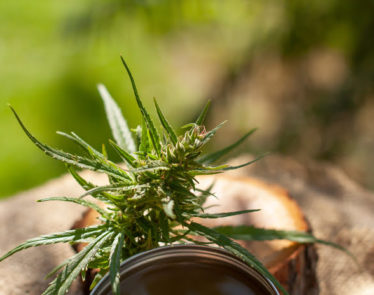
Last week saw the majority of cannabis companies in both the US and Canada release their quarterly earnings, and if anything was gleamed from the first year of legal weed north of the border, it certainly led to tempered expectations. Across the board, we saw pot stocks sink in light of widening losses and underwhelming sales, leading to many of the major players scaling back production in an effort to reign in expenses after overreaching in the freshman year of legal pot.
The recent flurry of earnings reports tells us a great deal about the cannabis market, and there were always going to be lessons to be learned in such a nascent industry, but first, let's take a look at how some of the bigger names in the industry fared.
The Earnings
Canopy Growth (TSX:WEED) (NYSE:CGC) was singled out as a potential industry leader just over a year ago, led by the charismatic pot pioneer Bruce Linton. Fast forward 12 months, and Linton has been ousted by the very company he banked on to drive Canopy forward—Constellation Brands (NYSE:STZ). The world's largest pot stock by market cap saw its biggest intraday drop following the release of its quarterly results.
Although gross revenue rose by 6% from the previous quarter, net sales fell to $76.6 million CAD from $90.5 million CAD due to a substantial sales adjustment as a result of returns and pricing allowances. The big worry for Canopy and its investors is the soaring costs at the company. Including the aforementioned sales adjustments, the company's gross margin was a staggering -15%, with operating expenses ballooning another 15% to $269.4 million CAD. All in all, Canopy lost $265.8 million CAD but does still have a tidy $2.73 billion CAD at its disposal.
Aurora Cannabis (TSX:ACB) (NYSE:ACB) was one of the market's biggest losers after reporting its quarterly results, which were so abysmal that the company was forced into halting production at its Danish facility and deferring the completion of its site at Medicine Hat in order to cut costs. Revenue came in at $75.3 million CAD, down 24% from the previous quarter, while net income was just $12.8 million CAD, which represented earnings per share of $0.01, a sharp drop from the same period last year in which the company generated earnings per share of $0.12.
Cronos Group (TSX:CRON) (NASDAQ:CRON) was one of the few big-hitters to actually see its stock jump despite missing the beat on its quarterly results. For the quarter, Cronos reported net sales of $12.7 million CAD, which missed Wall Street's expectations but was an improvement on the previous quarter. The company also reported a huge profit of $788 million CAD, but this was artificially bolstered by Altria's (NYSE:MO) equity investment into the firm.
Once all the benefits from the investment are stripped back, gross profit was 5.3 million CAD before operating expenses of $34.8 million CAD. The really eye-catching figure in Cronos' earnings was the cost per gram, which halved to $3.75 in Q3. This is down to the massive oversupply that the market is currently facing, due to a lack of retail channels and the dominance of the black market, but we'll get to that in a minute.
>> Exactus Stock Soars on Two Major Supply Agreements
Tilray (NASDAQ:TLRY) is the last of the "big four" on our list. Its earnings were more of a mixed bag than its competitors, with net sales coming in at $48.2 million USD, up from $42.1 million USD in the previous quarter. Despite several positives in its quarterly report, including a third consecutive quarter of gross margin improvement, Tilray still wound up losing $23.3 million USD on an operating basis and also saw its price per gram sink to $3.25 for mostly the same reasons as Cronos, meaning any hope for a quick turnaround faded fast.
The Lessons
Okay, so year one of legal weed hasn't exactly gone to plan, but it has been a huge learning curve for the companies, investors, and regulators at the heart of the industry. Ask any cannabis CEO what they feel are the biggest issues facing the industry, and they'll all tell you the same thing—regulatory uncertainty and a lack of retail visibility. While Health Canada naturally has to take a stringent stance on cannabis sales and marketing, there is still more the regulator could do to help meet pot firms somewhere in the middle.
While the opening of more stores would obviously help deter consumers from the black market and increase visibility, perhaps clearer and more lenient marketing rules could help companies boost their profile and help consumers differentiate between the products and brands they do and do not like.
For the cannabis companies, it's clear what the prevailing issue is—most overreached with aggressive expansion strategies early on. Aurora's halting of production and construction is the prime example of this, and other companies, such as The Green Organic Dutchman (TSX:TGOD) (OTCQX:TGODF), have experienced similar financing woes. While companies obviously can't go back in time and do things differently, hindsight is a useful tool in the 2.0 market to ensure that companies reign in spending and don't bank too much on a massive surge in demand.
The Next Challenge: Oversupply and the 2.0 Pot Market
Oversupply is the next major issue facing the industry as we enter into the cannabis 2.0 market. Canada’s cannabis producers are harvesting enough pot to satisfy just over 80% of the total demand projected by Health Canada. The problem is, legal sales have amounted to just 14% of demand, so will we see a huge displacement from the black market? It's unlikely, given how much the illicit prices undercut legal ones. However, this is where oversupply could help as it will naturally drive down the cost per gram, although it could lead to a loss-leader situation.
Recent months have shown that the entire industry is pinning its hopes on the 2.0 market, which will allow for the sale of derivatives, such as vapes, edibles, and infused beverages. Deloitte estimates in a recent report that the second wave of cannabis legalization will open a $2.7 billion CAD market in Canada, with cannabis-extract-based products accounting for about $1.6 billion CAD. Most companies have released their portfolio of products, but will Health Canda's regulations get in the way again? Only time will tell.
The Takeaway
In the long-term, the derivative market will do far more for pot stocks than the flower market did, given the substantially higher margins and access to a consumer base who may never have experienced cannabis. Whether it can provide the miracle growth that many are hoping for remains to be seen, and if year one taught us anything, it's to curb expectations. These 2.0 products will go to market early next year, meaning the next batch of quarterly earnings will be the first of the 2.0 market.
>> Read More Investing & Finance
Featured Image: DepositPhotos © Fotofabrika












